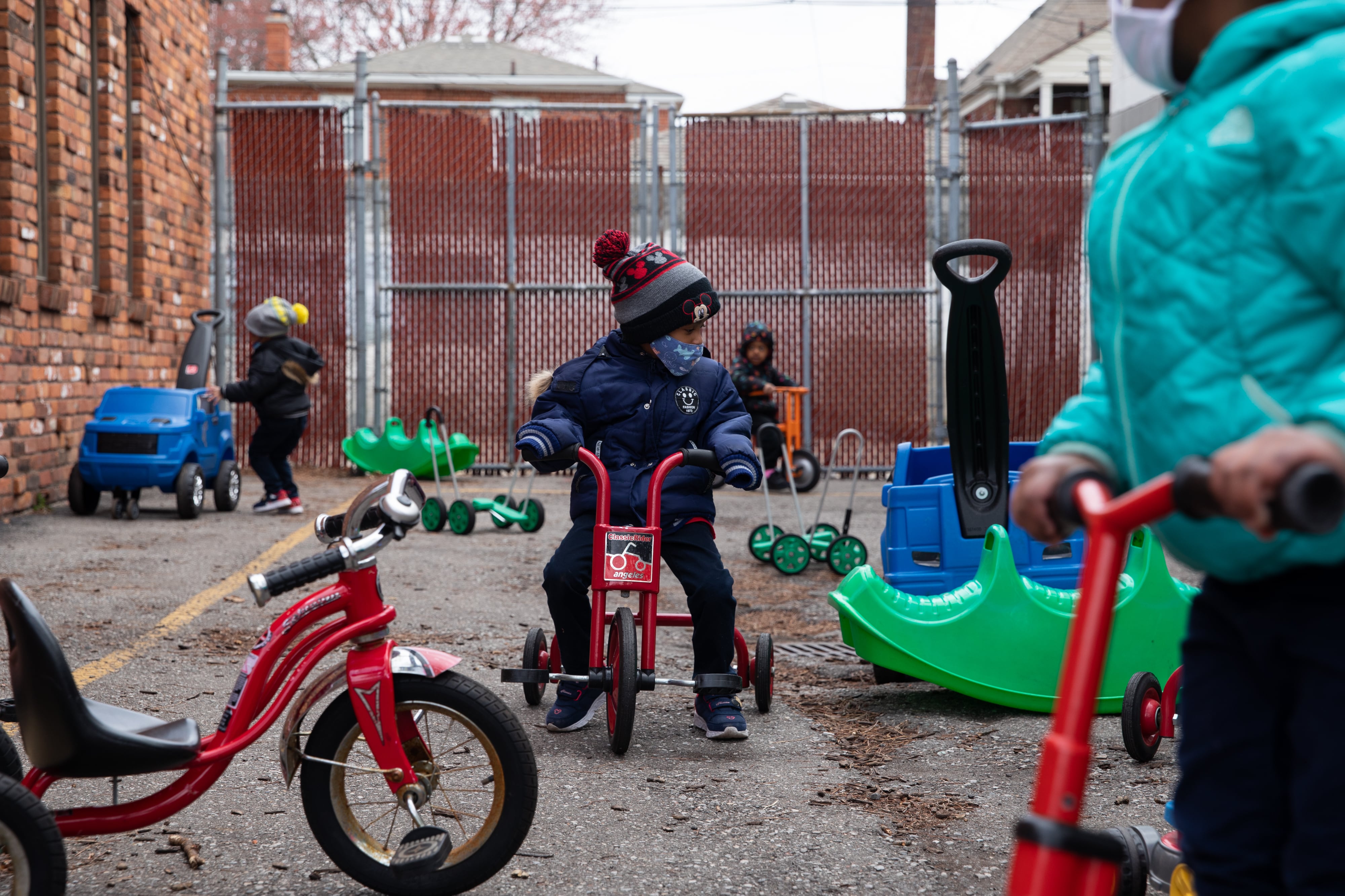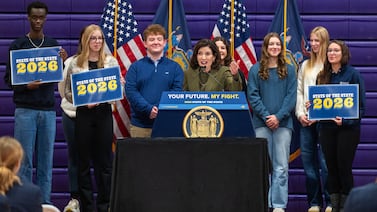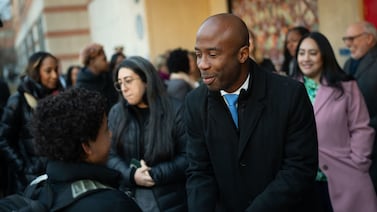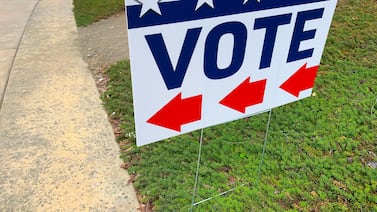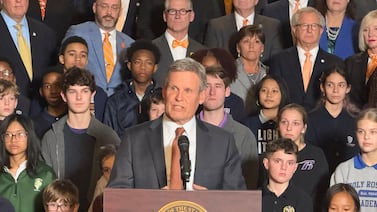Legislation pushed Thursday by President Biden includes proposals that would reshape many aspects of children’s lives, from whether they attend preschool to whether their families can afford basic needs like food and housing.
The scaled-down but still sweeping legislation would make it easier for states to offer universal pre-K, expand free school meals, and cement a cash benefit for the country’s poorest families with children.
“We can finally take us from 12 years to 14 years of universal education in America,” Biden said at the White House Thursday morning, referring to the proposed pre-K expansion.
Most of the proposals won’t directly affect the country’s K-12 schools, and a plan to devote billions to upgrading America’s school buildings was dropped during negotiations, along with the promise of free community college. But the bill does include modest funding increases for students with disabilities and teacher training programs — and research suggests that the antipoverty provisions could have lasting effects on children’s learning.
It remains unclear whether Democrats have the support to pass the $1.85 trillion package, which emerged after months of internal haggling between progressives and moderates. (The program would be paid for by hiking taxes on corporations and wealthy households.) Republicans have remained firmly opposed to what they see as government largesse.
But Democrats say they’re close to a final deal. Here’s what it would mean for families and schools.
More money for families with children
One way the federal government has long tried to help parents is with what’s called the child tax credit. Before the pandemic, most parents received a $2,000 tax rebate for each child. That left out the country’s very poorest families, though, since households that didn’t make enough money to owe income taxes didn’t get the full benefit.
The program changed this year. The American Rescue Plan — Biden’s big stimulus package, passed in March — boosted those benefits for one year, so families were eligible for $3,600 credit for each child aged 0-5 and $3,000 for each older child. The money has been distributed in monthly checks starting in July. Crucially, the lowest-income families were made eligible for the full payments, too. (The payments shrink for high-income families, and the wealthiest families aren’t eligible.)
The new legislation would temporarily keep the child tax credit at its higher dollar amount and permanently expand eligibility.
In other words, the $3,600 and $3,000 credits would continue for another year. After that, the payments would return to $2,000 per child. Families who don’t owe federal taxes — again, the poorest families — would remain eligible for the benefit. (In tax parlance, the credit would be “fully refundable.”)
“The full refundability part is really important,” said Zach Parolin, who has studied the impact of the expanded tax credit as a senior fellow at Columbia University’s Center on Poverty & Social Policy. “Those families who need the benefit the most would be getting it.”
Research has shown that students tend to do better in school when their families receive anti-poverty benefits, including food stamps, housing vouchers, and cash payments. And the additional money distributed this year appears to already have had an effect on children’s well-being.
Soon after the benefits began, the number of children who went without enough food in a given week dipped from 6.6 million to 4.6 million, according to a survey of parents. Forty percent of low-income families said they have also spent some of this year’s tax credit on educational expenses.
The payments also led to a sharp decline in child poverty. The program has not reduced poverty as much as some hoped it would, though, because it hasn’t reached everyone who qualifies. That’s likely because families who don’t file taxes need to sign up with the IRS. Federal and state officials have started campaigns to spread the word.
Steps toward universal preschool
The legislation also includes billions to help states launch or grow pre-kindergarten programs open to all 3- and 4-year olds. The goal is to eventually reach some 6 million children through a combination of school districts, Head Start, and private providers, the White House says.
“It’s a tremendous opportunity,” said Steven Barnett, founder of the National Institute for Early Education Research at Rutgers University. “How successful it is will not just depend on the federal government. It will depend on state and local governments.”
State governments would have to opt into the program, and eventually foot some of the bill. Barnett said a number of states have hoped to expand their programs and would be poised to use new federal money to do so. Others might be more reluctant because of the price tag.
Parents would have the choice of whether or not to send their child to pre-K. Presently, 44% of 4-year-olds and just 17% of 3-year-olds are enrolled in publicly funded preschool.
The bill would also expand child care subsidies for parents, which could ease the financial burden on families and draw more women into — or keep more women in — the labor force.
The White House argues that early childhood education benefits children for years to come. Indeed, a number of studies have shown that children do better academically in both the short- and long-term after attending preschool.
One recent study found that children who enrolled in Boston’s universal pre-K program were 6 percentage points more likely to graduate high school and 5 points more likely to enroll in college. Some other studies looking at Head Start and at pre-K students in Tennessee have come to more equivocal conclusions, though.
“We’re still trying to figure out why is that the outlier here,” said Diane Schanzenbach, an education economist at Northwestern, referring to the disappointing Tennessee findings. “We don’t know.”
Still, the evidence for pre-K is strong, Schanzenbach said. “This is a sensible investment,” she said.
Free school lunches for more students
The bill also aims to offer free school meals to 8.7 million additional children. It would do so by making it easier for every student at a school to qualify for free lunch through a program known as community eligibility.
For the next five years, schools could qualify if 25% (rather than 40%) of students are eligible for subsidized meals. The feds would also incentivize school districts to adopt community eligibility by providing more generous reimbursements for the cost.
States would also have the option to offer free meals to all students statewide.
Research suggests that school-wide free lunch eligibility can raise test scores while reducing disciplinary incidents and bullying.
Boosts for Pell grants, HBCUs
The legislation would add $550 to the annual Pell grant, which helps low-income college students pay tuition. Currently, Pell grants are set at $6,495.
The bill also would invest $3 billion in historically Black, tribal, and minority-serving colleges and universities, although that’s significantly less than Biden originally proposed. Also not included: free community college.
Small K-12 programs, including efforts to bolster teacher diversity
Although the efforts are relatively modest in scope, the proposed legislation includes a handful of programs designed to improve training for school staff and influence the new teacher pipeline. They include:
- $200 million for the preparation and professional development of Native American language teachers
- $161 million to improve training for staff who work with students with disabilities.
- $113 million for “grow your own” programs that recruit teachers “who live in and come from the communities the schools serve.”
- $112 million for teacher residency programs, which are typically teacher training programs run by school districts in partnership with local universities.
- $112 million to support school principals.

